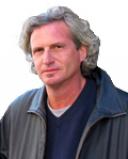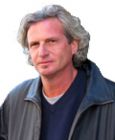Flow
For a Happy Thanksgiving, Add "Flow" to Family, Friends, Food, and Football
Being fully in the moment may increase happiness.
Posted November 23, 2021 Reviewed by Michelle Quirk
Key points
- Mihaly Csikszentmihalyi’s concept of flow argued that happiness was a function of being fully in the moment.
- Csikszentmihalyi recommended that people do more of what they love and less of what they hate.
- The most creative people may be the happiest, as they can escape the distractions of time and space through their art.
One can say that, for many Americans, much of the joy of Thanksgiving resides in 4 F's: family, friends, food, and football.
But there is another F that is an important, if not essential, factor in being happy on Thanksgiving and, for that matter, every other day of the year. Thankfulness and gratitude are, of course, part of the equation, but I see them as part of a bigger construct: flow.
Dozens of perfectly reasonable theories regarding happiness have been put forth, but few if any resonate more than Mihaly Csikszentmihalyi’s concept of flow. The psychologist and University of Chicago professor struck a chord with his 1990 book Flow: The Psychology of Optimal Experience, in which he argued that happiness was a function of being fully in the moment. “Flow” continues to serve as a popular model for happiness; his book of that name was republished in 2008, and that same year he gave a TED talk on the subject.
Csikszentmihalyi had been interested in happiness since his childhood in Hungary during World War II, with his hypothesis of flow gelling in the early 1970s. Most psychologists, especially those in the psychoanalytic school, tended to focus on the darker side of the human mind, making Csikszentmihalyi’s more positive perspective rather revolutionary. That happiness was something that individuals could conjure by themselves was a refreshing alternative to the traditional psychological view that we were victims of our past as well to the ascending, biology-based view that we had to play with the hand we were dealt at birth. Flow also dovetailed nicely with Americans’ can-do spirit — i.e., that anything was possible if one tried hard enough to achieve it.
Do More of What You Love and Less of What You Hate
How exactly did Csikszentmihalyi‘s theory of flow relate to personal happiness? Happiness was a function of our degree of engagement with whatever we chose to do, he argued in Flow and his follow-up book Finding Flow, advising those seeking to be happier to become absorbed at work, during leisure time, and in relationships. Flow was “a state of effortless concentration and enjoyment,” and the best thing about it was that it was of our own making. One usually lost track of time and felt like nothing else mattered during these exceptional moments, he explained, making it a worthy endeavor to try to integrate them into everyday life. “Start doing more of what you love and less of what you hate,” went his rather simple prescription to happiness, this “going with the flow” the most direct path to realizing greater happiness in life.
Happiness and Creativity
It was easy to see how the roots of flow could be traced back to the elation one often feels when one is fully engaged in a creative pursuit. Csikszentmihalyi had done considerable research in the area of creativity, making it natural for him to find a link between happiness and creative people. Such folks loved what they did, he pointed out — the secret, if there was one, to being happy. If happiness was a “side effect” of making and discovering new things (scientists and inventors were also considered highly creative people), Csikszentmihalyi suggested, those wishing to be happier should consider enhancing their own creativity.
What was perhaps most interesting about Csikszentmihalyi’s view was that it challenged the popular belief that especially creative people tilted decidedly towards unhappiness, a byproduct of their isolation, obsessive tendencies, and, often, cynical view of society. Rather, he argued, the most creative people were often the happiest, as it was they were who most able to escape the distractions of time and space through their art.
This Thanksgiving, be happy by being fully in the moment (while enjoying your family, friends, food, and football).
References
Samuel, Lawrence R. (2018). Happiness in America: A Cultural History. Lanham, MD: Rowman & Littlefield.


